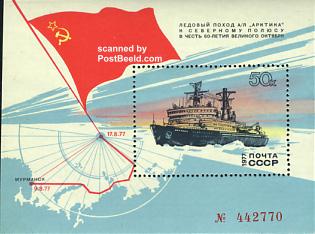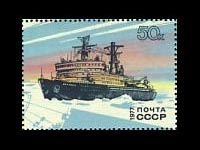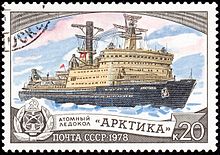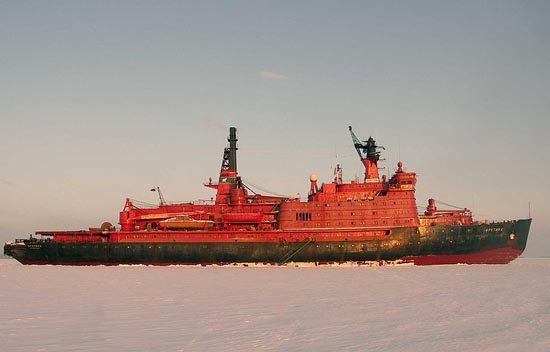

On August 17, 1977, at 4am Moscow time, the atomic icebreaker Arktika, having overcome the ice of the Central Polar Basin, became the first surface craft to reach the North Pole. The icebreaker covered 2,528 miles in 7 days.
The original idea was to replicate Russian aviator Chkalov’s flight over the North Pole to America, but by sea, arriving in the United States just in time to join in on the celebrations of that country’s 200th anniversary. The Russian authorities however, were not enthusiastic about the American component of the trip, though the idea of conquering the North Pole by sea was deemed very attractive.
Preparations for the expedition were made with the utmost secrecy. Arktika was first launched in 1975 and undertook rigorous testing before being judged ready for its task. Before the trip was executed, a thorough air reconnaissance of the area was undertaken, as the Arctic ice was very mobile and could change its location very often, causing possible danger to the icebreaker. The expedition consisted of over 200 members. Aside from the record-breaking mission of reaching the North Pole, its other goals were checking the icebreaker’s properties and its resistance capabilities when confronted with constant ice battering.
On reaching the North Pole, it spent 15 hours on top of the world.
Once the crew and the rest of the expedition members came out on the ice to celebrate, the political propaganda agent – the person responsible for coverage of the event for Soviet history – immediately organized a meeting to commemorate the achievement, starting with an address from the then Soviet leader, Leonid Brezhnev. He drafted a meticulous plan, including not only the agenda for the celebration, but time slots for applause, tears of joy, and expressions of delight. Some people organized fireworks and salvoes from the weapons they had on board. A steel mast was erected on the site with a Soviet flag flying upon it, and a huge steel plate carved with the Soviet coat of arms was dropped on the ground. On returning to the Soviet Union, all of the expedition members became instant heroes, and their feat was even compared to Yury Gagarin’s first space flight.
All of the crew members were awarded the title of Hero of Socialist Labour, while the rest were given medals and granted titles of honoured polar explorers, though some of them had only been on board the icebreaker as friends or relatives of the ship’s crew. The genuine polar explorers on board the Arktika considered this an insult as normally polar explorers could only become so-honoured after around ten years of work.
Amusingly enough, after the expedition returned, the 26 official polar explorers among the ship’s complement were all promised a free Volga, a very expensive and hardly affordable car in the Soviet Union at the time. When the decree for issuing the Volgas was finally signed, it transpired that only 2 out of 26 made their way to their new owners, as 24 others were stolen by the authorities.
![]()


